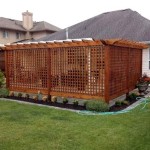Planting Ideas For Patio Pots: Cultivating Beauty in Confined Spaces
Patio pots offer a versatile and aesthetically pleasing method to introduce greenery and color to outdoor living areas. Whether space is limited to a small apartment balcony or extended across a sprawling terrace, container gardening provides opportunities to customize the environment with a diverse range of plants. Careful planning and plant selection are crucial for achieving thriving and visually appealing container arrangements.
The initial step in developing successful patio pot plantings involves assessing the environment. Sunlight exposure, prevailing wind conditions, and drainage capabilities all influence plant choice and overall pot health. Identifying the specific amount of sunlight the patio receives throughout the day is paramount. Plants are broadly categorized as full sun (requiring at least six hours of direct sunlight daily), partial sun (receiving between three and six hours), and shade-tolerant (thriving in less than three hours). Choosing appropriate plant types based on these conditions ensures robust growth and abundant flowering, where applicable.
Selecting the proper container is equally important. The size of the pot should correspond to the mature size of the plants selected. Smaller plants are well-suited to smaller containers, while larger, more vigorous species require substantial root space. Material also plays a role. Terracotta pots, while aesthetically pleasing, are porous and dry out more quickly than plastic or resin containers. This makes them suitable for plants that prefer drier conditions. Plastic and resin options retain moisture better, making them ideal for plants that require consistent hydration. Drainage is non-negotiable; all containers must have adequate drainage holes to prevent waterlogging, which can lead to root rot and plant decline.
Soil selection is another critical factor in the success of patio pot plantings. Garden soil is generally too heavy and compacts easily in containers, hindering drainage and root growth. A lightweight potting mix, specifically formulated for container gardening, is the preferred choice. These mixes typically consist of peat moss, perlite, and vermiculite, which provide excellent drainage, aeration, and moisture retention. Adding slow-release fertilizer to the potting mix at planting time provides plants with essential nutrients over an extended period. Alternatively, liquid fertilizers can be applied regularly throughout the growing season.
Key Considerations for Plant Selection
A wide array of plants can flourish in patio pots, but careful consideration should be given to factors beyond sunlight requirements. Plant height, spread, and growth habits should be evaluated to ensure a balanced and visually appealing arrangement. Mixing plants with different textures, colors, and forms creates dynamic and interesting displays. Incorporating plants with varying bloom times ensures continuous color throughout the growing season.
For sunny patios, consider drought-tolerant plants like succulents, such as sedums and echeverias, which offer a range of colors and textures. Herbs like rosemary, thyme, and lavender also thrive in sunny locations and provide aromatic foliage. Annuals like petunias, geraniums, and zinnias offer vibrant color and bloom continuously with regular deadheading (removing spent flowers). Perennials like salvia, coreopsis, and coneflowers can be incorporated for long-term interest, though they may require occasional division and replanting.
Shady patios benefit from plants with lush foliage and subtle blooms. Hostas, ferns, and impatiens are classic choices for shaded areas. Begonias, with their colorful foliage and delicate flowers, also perform well in partial shade. Caladiums provide striking foliage with vibrant colors and patterns. Consider incorporating trailing plants like ivy or creeping Jenny to cascade over the edge of the pot, adding visual interest and softness.
When designing container arrangements, the "thriller, filler, and spiller" approach is often employed. The "thriller" is the focal point of the arrangement, typically a tall or dramatic plant. The "filler" provides bulk and texture, filling in the space around the thriller. The "spiller" cascades over the edge of the pot, softening the edges and adding movement.
Examples of “thriller” plants include ornamental grasses, small shrubs, or tall flowering plants like canna lilies or delphiniums. For “filler” plants, consider options like petunias, geraniums, or calibrachoa. “Spiller” plants often include trailing vines like ivy, sweet potato vine, or lobelia.
Practical Planting Techniques
Before planting, ensure that the container is clean and the drainage holes are unobstructed. Partially fill the container with potting mix, leaving enough space for the root balls of the plants. Gently remove the plants from their nursery pots, loosening any circling roots. Position the plants in the container, paying attention to their spacing and arrangement. The tallest plant (the "thriller") is typically placed in the center or towards the back of the pot, while the filler and spiller plants are arranged around it.
Once the plants are positioned, fill in the remaining space with potting mix, gently firming the soil around the root balls. Water thoroughly until water drains from the bottom of the pot. Add more potting mix if the soil settles after watering. Apply a layer of mulch, such as shredded bark or decorative stones, to help retain moisture, suppress weeds, and improve the appearance of the pot.
Watering is a crucial aspect of container gardening. Container plants tend to dry out more quickly than plants in the ground, so regular watering is essential. The frequency of watering depends on factors such as weather conditions, plant type, and container material. Check the soil moisture regularly by inserting a finger into the soil. If the top inch of soil feels dry, it is time to water. Water deeply, ensuring that the entire root ball is moistened. Avoid overwatering, as this can lead to root rot.
Fertilizing container plants regularly is also important, as the nutrients in the potting mix are gradually depleted. Use a balanced, water-soluble fertilizer diluted to half strength, applying it every two to four weeks during the growing season. Alternatively, incorporate slow-release fertilizer granules into the potting mix at planting time.
Deadheading spent flowers promotes continued blooming and prevents the plants from putting energy into seed production. Regularly remove any yellowed or dead leaves to maintain the plant's health and appearance. Pruning plants as needed helps to maintain their shape and size.
Addressing Common Challenges and Troubleshooting
Despite careful planning and execution, challenges may arise in patio pot plantings. Pests and diseases can affect container plants, just as they do in the garden. Common pests include aphids, spider mites, and whiteflies. Regularly inspect plants for signs of infestation and treat promptly with insecticidal soap or horticultural oil. Diseases like powdery mildew and fungal leaf spots can also occur, particularly in humid conditions. Improve air circulation and treat with a fungicide if necessary.
Yellowing leaves can indicate a variety of problems, including overwatering, underwatering, nutrient deficiencies, or pest infestations. Check the soil moisture, fertilize appropriately, and inspect for pests. Drooping leaves can be a sign of underwatering or heat stress. Ensure that the plants are receiving adequate water and provide shade during the hottest part of the day if necessary.
Lack of blooming can be caused by insufficient sunlight, improper fertilization, or lack of deadheading. Ensure that the plants are receiving the appropriate amount of sunlight, fertilize with a bloom-boosting fertilizer, and regularly remove spent flowers. Leggy growth, characterized by long, spindly stems with sparse foliage, indicates insufficient light. Move the plants to a brighter location or provide supplemental lighting.
Wind can also pose a challenge to patio pot plantings, particularly in exposed locations. Heavy, sturdy containers are less likely to be blown over by the wind. Consider placing the pots in a sheltered location, such as near a wall or fence. Staking tall plants can help to prevent them from being damaged by the wind.
By addressing these common challenges and adapting care practices to specific plant needs, patio pot plantings can thrive and provide beauty and enjoyment throughout the growing season. Regular observation and proactive care are essential for maintaining healthy and visually appealing container arrangements.

Tabletop Planter Ideas Garden Gate

24 Stunning Container Garden Planting Ideas Patio Flower Pots Potted Plants Outdoor

24 Stunning Container Garden Planting Ideas Fall Gardens Design Patio Flower Pots

16 Container Gardening Ideas Potted Plant We Love

20 Best Patio Plants Outdoor Ideas

3 Potted Plant Arrangement Ideas For A Gorgeous Patio Garden Container Gardening Design

18 Container Gardening Ideas Potted Planting Arrangements

20 Ideas For Using Large Garden Containers

31 Flower Pot Ideas Container Gardening Flowers Garden Design Containers

Stand Out Designs For Alone Containers Part 1 Finegardening








